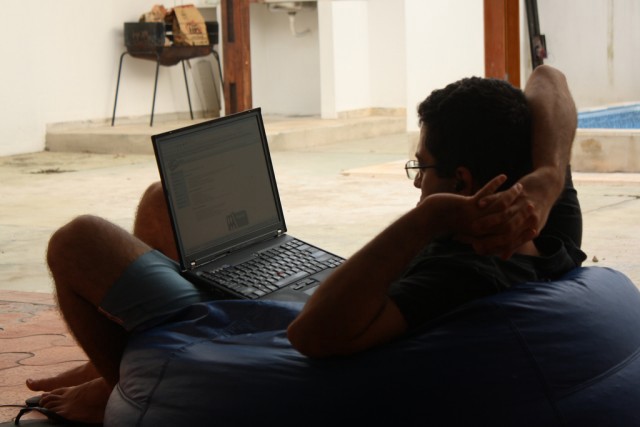Working From Home Does Not Have to Be the Worst

“It’s official: Working from home is the worst,” writes Fusion’s Casey Tolan, pointing to research showing that “people who telecommute 15.1 hours a week or more (or roughly two days per week) actually report decreased job satisfaction.” Tolan argues that “new parents and people with disabilities” may see real benefits from working from home, but the rest of us require face-to-face interaction to remain happy and productive.
[W]ork is not just a series of tasks to be checked off a list. It’s a social experience that involves trusting, learning from, and teaching other people, and working together to accomplish tasks you can’t do by yourself.
In the work-from-home future some managers envision, none of that will be possible. Co-workers will interact only in virtual spaces and over sterilizing tech platforms. There will be no water cooler, no spontaneous meetings, no ad hoc projects. We will all just be lines in each others’ Google calendars and names in each others’ Slack channels. And while we will have earned some cost savings for our companies, we will have lost an essential part of work: the sense of belonging.
I’m a person who has the option to work from home whenever I want, and also someone who does not enjoy working from home and would rather choose a co-working space, but I strongly disagree with the notion that working from home is ineffective and “the worst.” It all depends on what kind of work you do, of course, but it also has a lot to do with what a company prioritizes and how much trust and autonomy an employer gives you.
Let’s take this site for example. Nicole lives in Seattle, and while Ester is in NYC, we see each other about once a month. Ester, Nicole and I have clear tasks, so we can do them whenever we want as long as they get done. This means we can divide up the day to work however we want, doing split days of work in the morning, the afternoon off, and work again in the evening if we want to. The flexibility gives us the ability to pick up a kid from daycare, or run to an appointment, or meet a friend for a long lunch. We collaborate in a chatroom, throw around ideas for features and collaborations, but also have “watercooler” conversations about whatever is happening that day.
Sure, but that’s small beans, you say. Let’s take a company like Automattic, the makers of WordPress.com, where I happen to work on the editorial team. This is currently a “distributed” 400-person company that consists of HR professionals, developers, designers, customer support, business and legal teams — nearly all of whom work from home or from co-working spaces. The company offers the same kind of time flexibility, allowing you to choose your work hours. There are clear goals and expectations; as long as those are being met there’s no need to work typical 9-to-5 hours. Most collaborations happen over a communication platform like Slack, but teams also travel to meet in person a week or two out of the year to work on projects together (hence, why I’m often traveling for work). The company saves on real estate costs, but its distributed nature means it hires from all around the world — much of the talented individuals in the company live outside the U.S. — there is a huge benefit to that kind of diversity, and there is a real sense of belonging.
In any case, I’m not trying to be some kind of work-from-home evangelist! I’ve worked at places (i.e. a television production company) where working together in the same place was essential. But working from home does not have to be the worst.
Photo: Eduardo Otubo
Support The Billfold
The Billfold continues to exist thanks to support from our readers. Help us continue to do our work by making a monthly pledge on Patreon or a one-time-only contribution through PayPal.
Comments